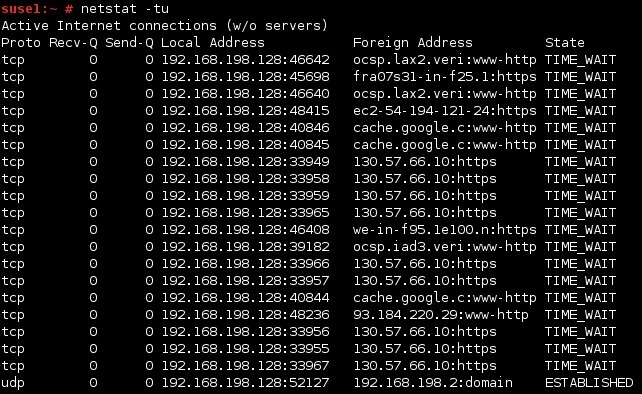
This guide provides commands specific to each protocol, commands to view general statistics about a system’s current connections, and ways to filter your output.
Netstat listening ports full#
Learning to Use the ss Tool to its Full Potential guide. To take a deeper dive into the ss tool, read our Using just the -l parameter tells ss to list all Linux’s listening ports, which are omitted by default, making it easier to check for listening ports in Linux. The output resembles the following: State Recv-Q Send-Q Local Address:Port Peer Address:Port Process For example, to view all listening and non-listening TCP sockets issue the following command: ss -ta Similar to netstat, this unrestricted list can get quite big on busy machines, so it is useful to restrict the ss command’s output by using command-line options. Running the ss with no options displays TCP, UDP, and UNIX sockets. A socket enables programs to communicate with each other across a network and is comprised of an IP address and a port number. It allows you to monitor TCP, UDP, and UNIX sockets. ss was created to improve upon netstat and provides more functionality. Using ssĪnother way to have Linux check ports is via the Inspecting Network Information with netstat guide.


Netstat listening ports how to#
To learn how to install netstat, interpret its output, and view common command line options, see our Tcp 0 0 localhost:domain 0.0.0.0:* LISTEN 553/systemd-resolve

Proto Recv-Q Send-Q Local Address Foreign Address State PID/Program name The output resembles the following: Active Internet connections (only servers) For example, to view the PID and program name for a system’s listening TCP connections, run netstat with the following command-line options: netstat -ltp You can control the output using netstat’s command-line options. While this checks if a port is open in Linux, it can generate a lot of output. Running netstat without any options displays all open sockets and network connections. The netstat tool is great for inspecting the following areas of your Linux system: See the following examples to identify which tool is the best fit for your purpose. While all three tools help you learn how to check if a port is open in Linux, each program has its own advantages and disadvantages. Since everything on a Linux system can be considered a file, lsof provides a lot of information on your entire system.

This guide introduces three common tools you can use with links to guides that dive deeper into each tool. There are several Linux tools that help you discover which ports are in use and identify both ends of active communications. You can also discover if you are unintentionally exposing an application or service to the internet, like a MySQL database. Your system’s active ports give you information about which outside applications may be connected to your system. One step in securing a Linux computer system is identifying which ports are active.


 0 kommentar(er)
0 kommentar(er)
